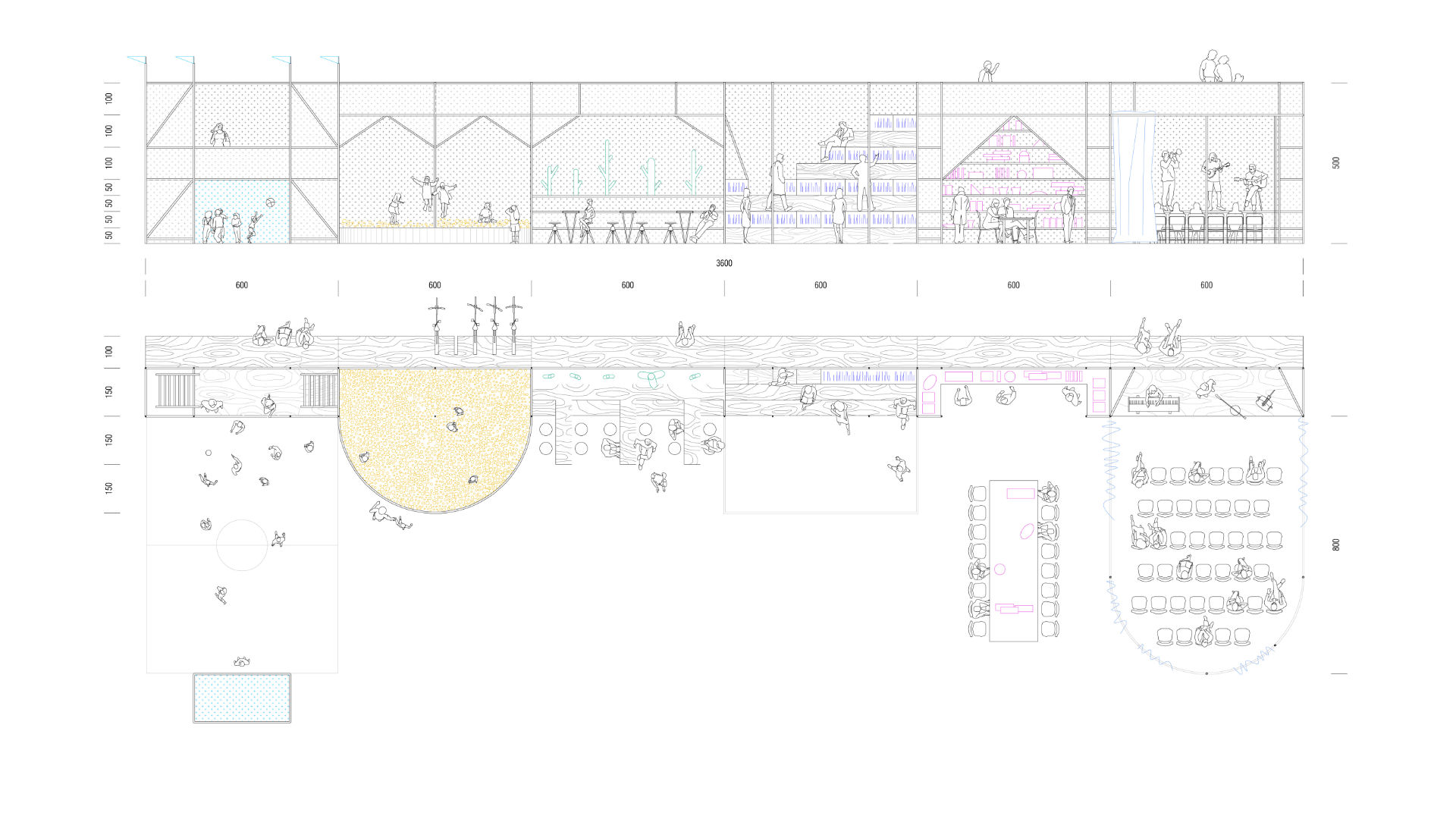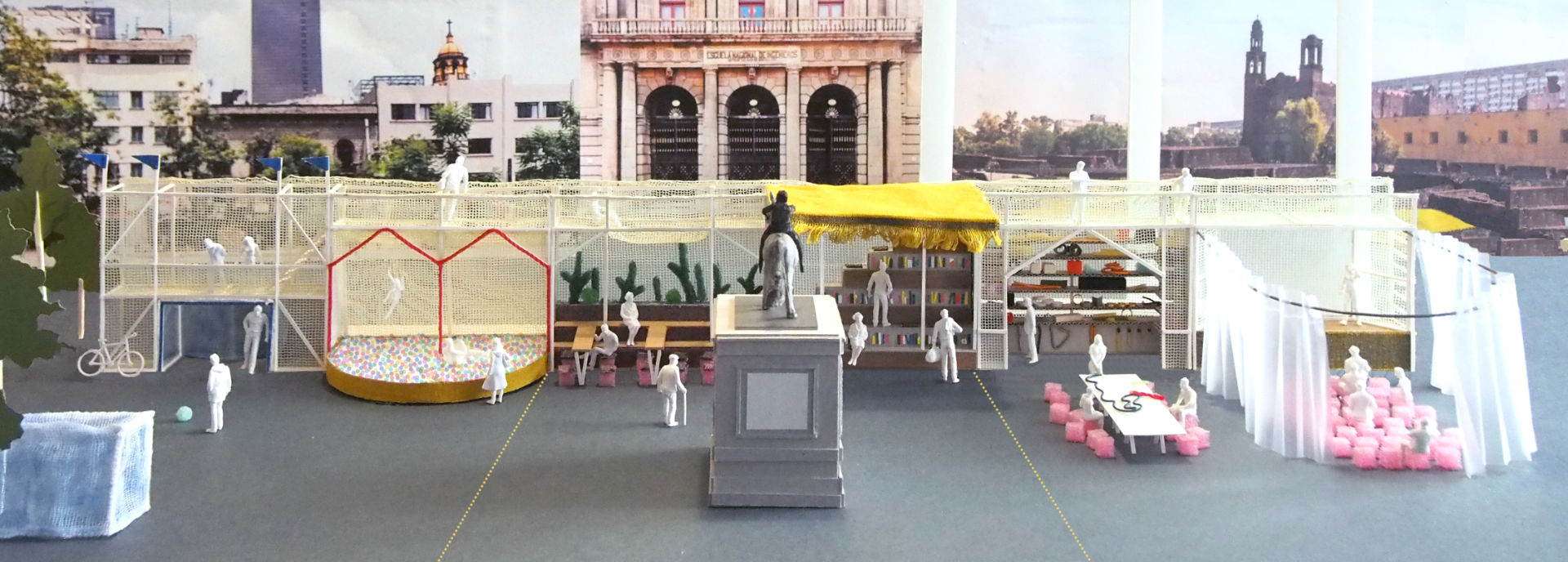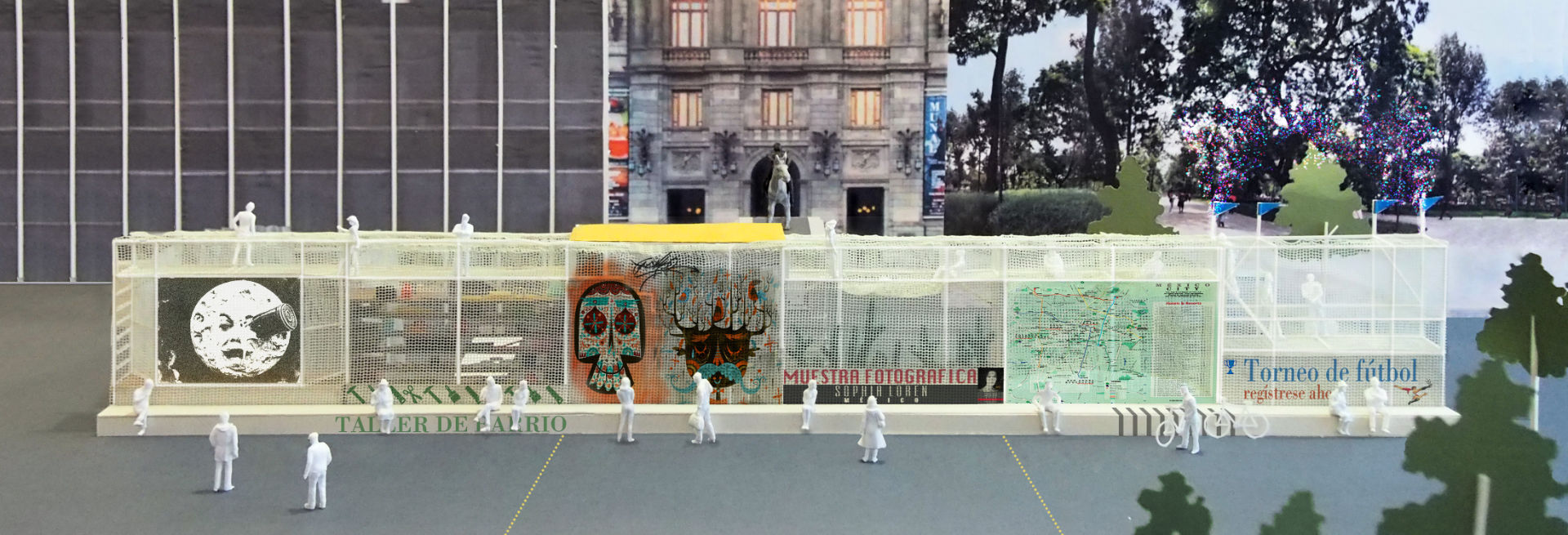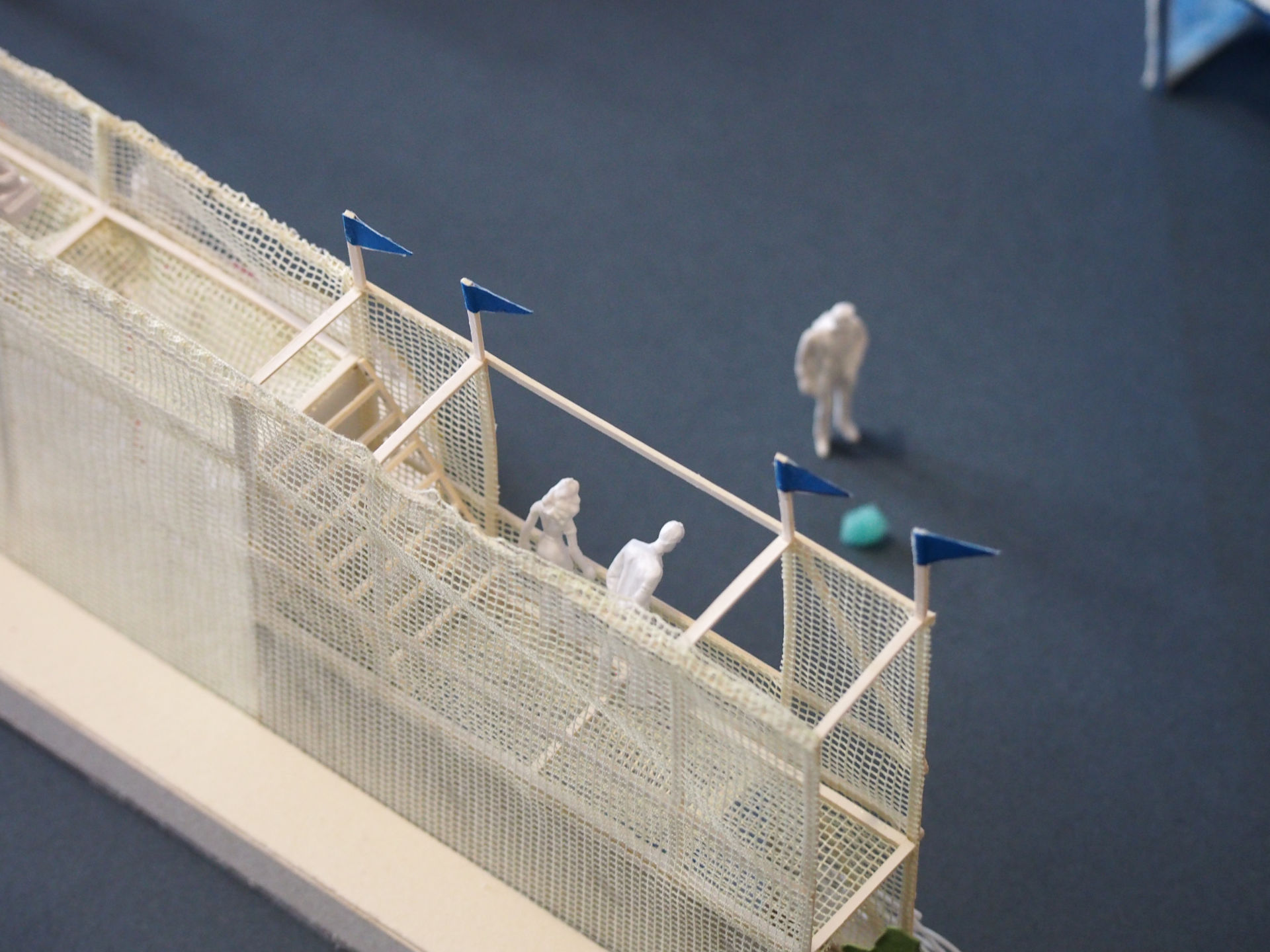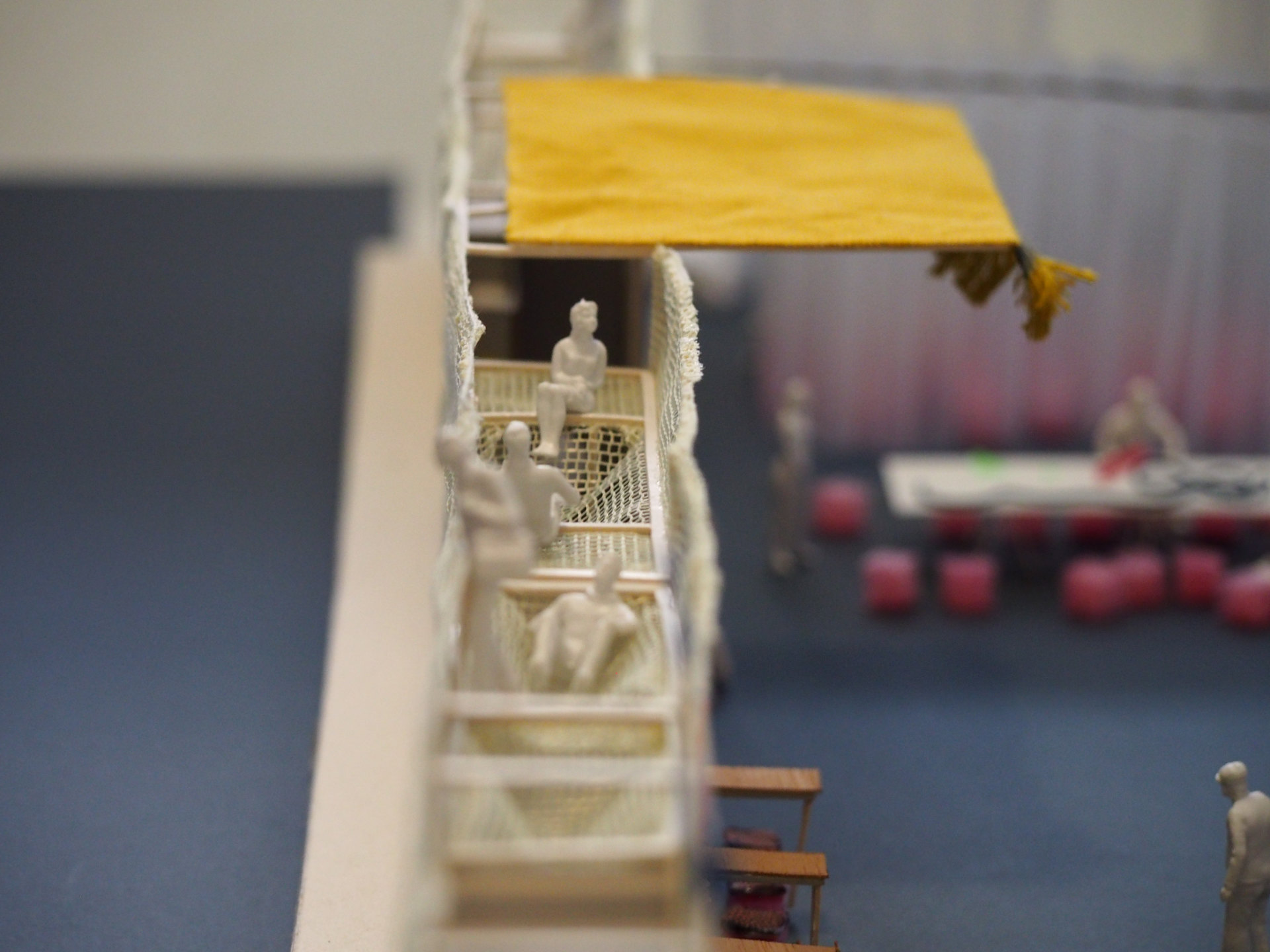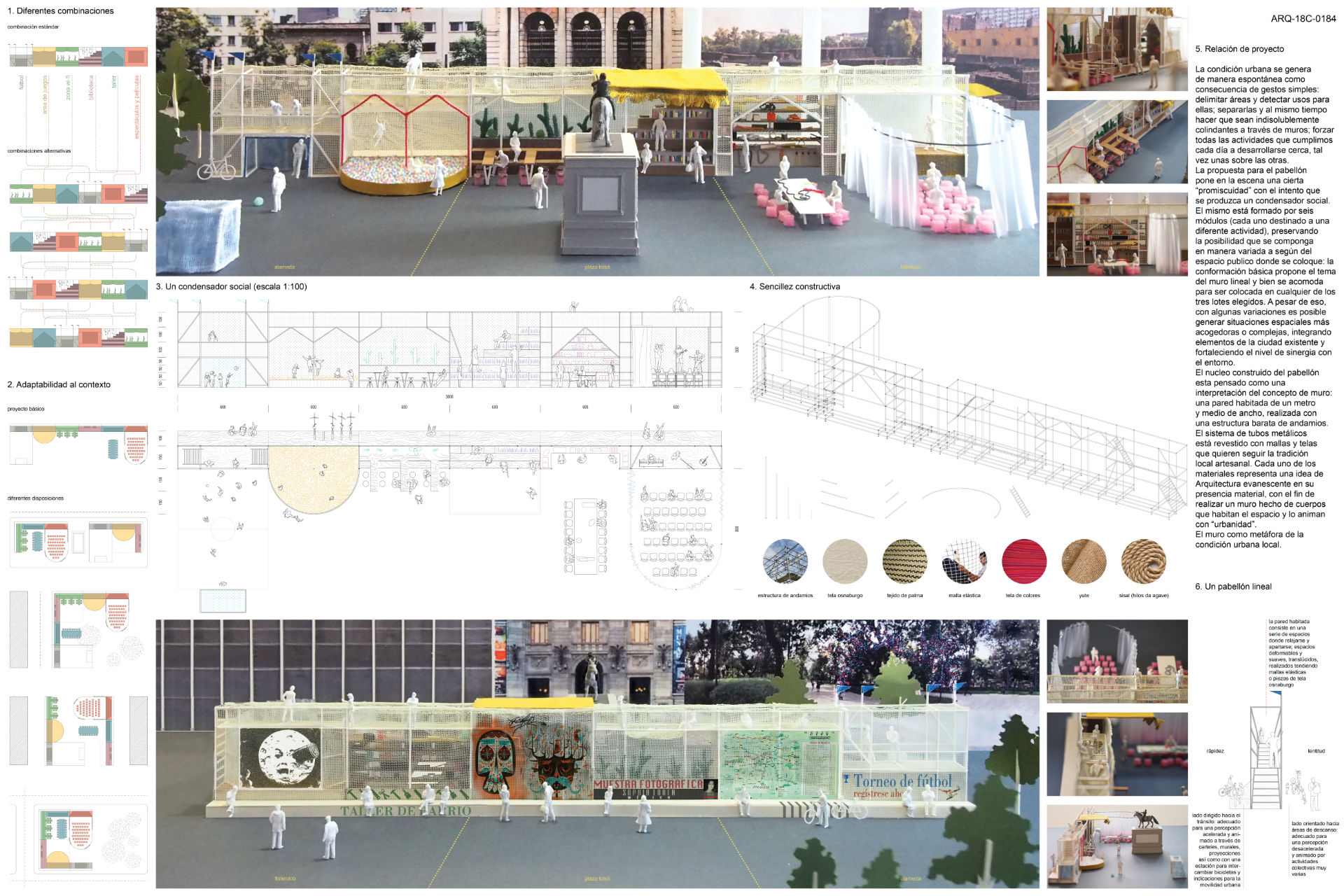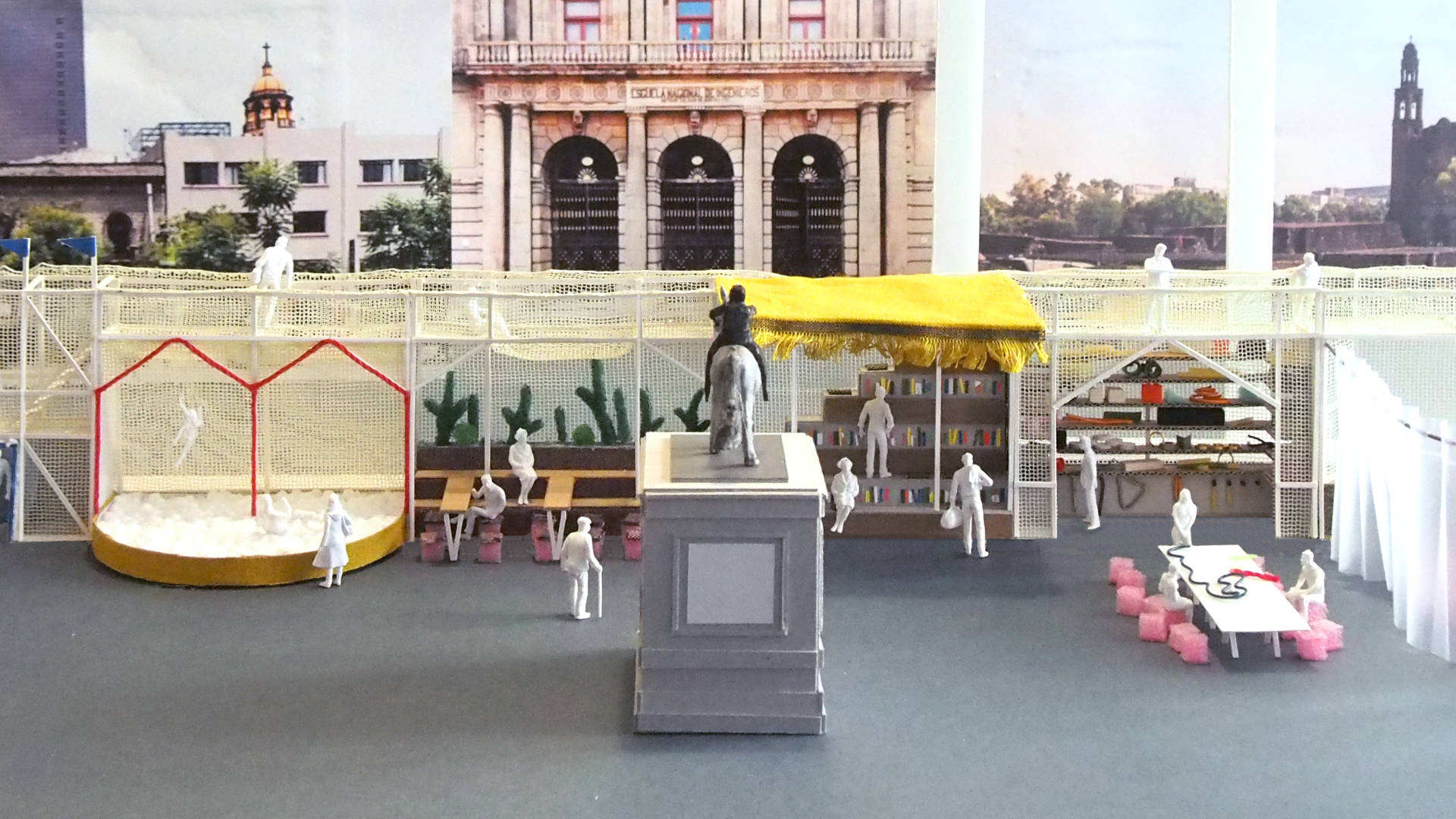
The urban condition arises spontaneously from simple gestures: defining areas and identifying their uses; separating them while simultaneously making them inextricably adjacent through walls; compelling all our daily activities to unfold in close proximity—sometimes even layered one atop the other. The pavilion proposal brings to the stage a certain promiscuity, with the intention of generating a social condenser. It is composed of six modules, each dedicated to a different activity, while preserving the flexibility to be arranged in various ways depending on the public space in which it is installed. The basic configuration explores the idea of a linear wall and lends itself well to any of the three selected lots. Nonetheless, with a few variations, it is possible to create more welcoming or complex spatial situations, integrating elements of the existing city and reinforcing the synergy with its surroundings. The built core of the pavilion is conceived as an interpretation of the wall concept: an inhabited wall, one and a half meters thick, constructed from a low-cost scaffolding structure. The system of metal tubes is wrapped in mesh and fabric that pay homage to the local craft tradition. Each material embodies an idea of architecture that is ephemeral in its physical presence—creating a wall made of bodies that inhabit the space and bring it to life with urbanity. The wall becomes a metaphor for the local urban condition.
